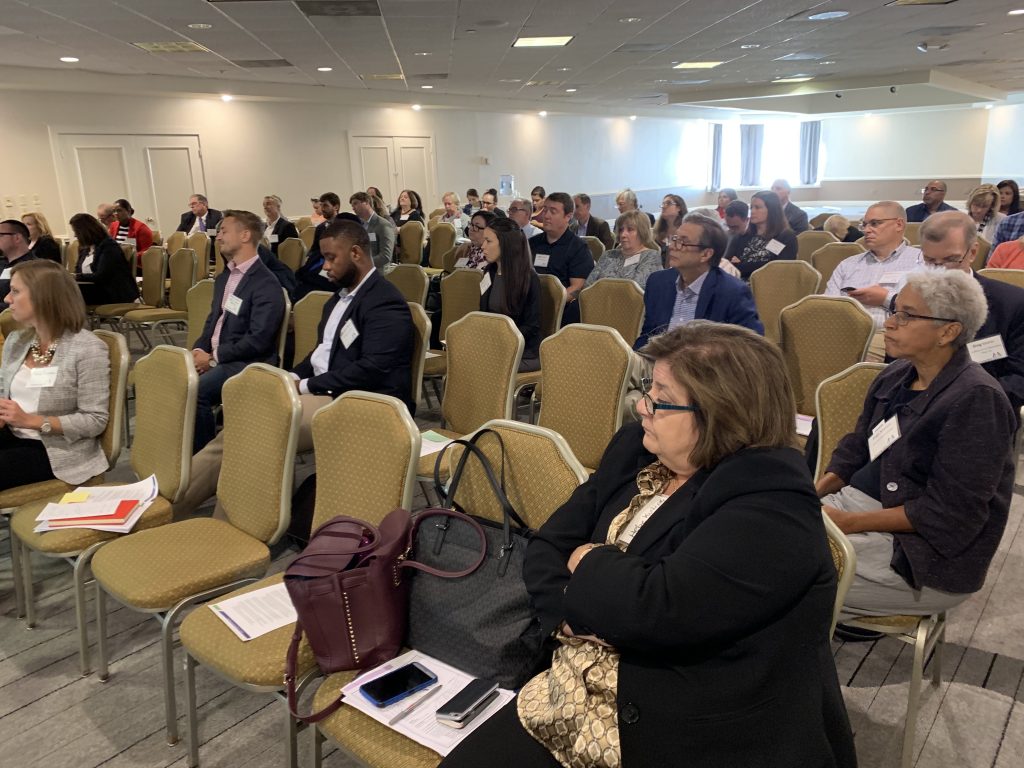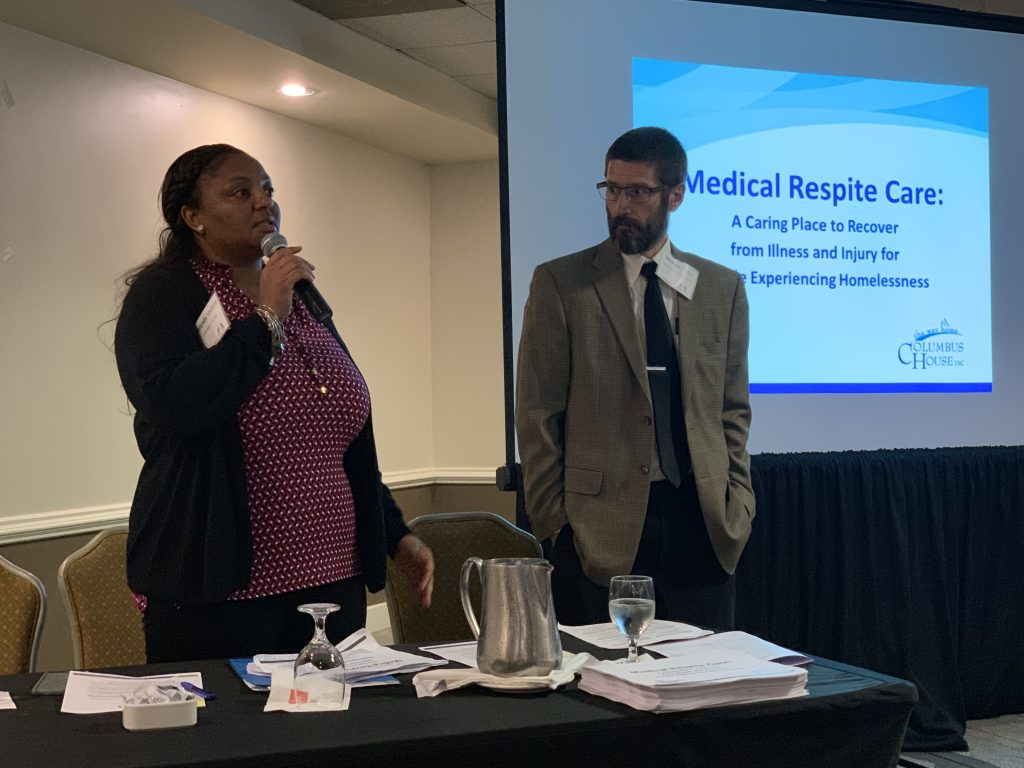Housing community explores successful CT collaborations to promote health

Over 300 Connecticut affordable housing stakeholders joined Governor Lamont and other speakers at the Affordable Housing Alliance’s 30th annual conference last week. The Governor explained his focus on affordable housing by relating a conversation with a young bus rider in New Haven who’d been homeless as a child. With help from housing care managers, he got his life together and was on the way to his first day of work at his first job. And it all started with a roof over his head.
The morning panel, “Health and Housing: Learning from Each Other”, featured two successful Connecticut community collaborations. When asked, few attendees reported currently being engaged in a community health and housing collaborative, but many organizations are considering or developing one.

Speakers from Yale-New Haven Hospital and Columbus House talked about creating their New Haven medical respite program in 2014. The program started with studies by a student and a fellow on the link between homelessness and high ER use. They created a task force to overcome cultural barriers to collaboration in both organizations and the larger community and were able to secure state funding for housing services, wrap around care, and 24/7 support. They described the challenges of reaching and retaining homeless patients and the importance of asking about housing “in a manner that preserves dignity”. To date, the program has achieved dramatic reductions in readmissions, ED use and hospital length of stay as well as medical savings between $12,000 and $25,000 per person in one year.
We also heard from Stamford Hospital and Charter Oak Communities on a community wellness collaboration also with significant results. The collaboration, Vita, created a health and wellness district in Stamford’s Westside neighborhood. The district combines mixed income housing communities, an urban farm, walkability and fitness, public safety, green housing, affordable housing, green space, environmental improvement, access to healthy food, healthcare access, support for small businesses and jobs, parenting support, anti-displacement services, and opportunities for social cohesion. Health outcomes across metrics have significantly improved in the neighborhood.
Barriers the speakers identified included skepticism from institutions, businesses and community members, different cultures and different expertise, and fears of displacement. Advice to communities trying to develop health/housing collaborations included seeking out unlikely partners, using a third-party facilitator, engage state and local policymakers, getting rigorous evaluations of need, monitoring impact, and following the data. Speakers urged new initiatives to consider benefits to all investors including rising property values, lower medical costs, and long-term community improvement and engagement. Opportunities described include hospital Community Health Needs Assessments and Medicaid’s proposed supportive housing benefit.
The Affordable Housing Alliance will be continuing the conversation with new health and housing programing throughout the year.

